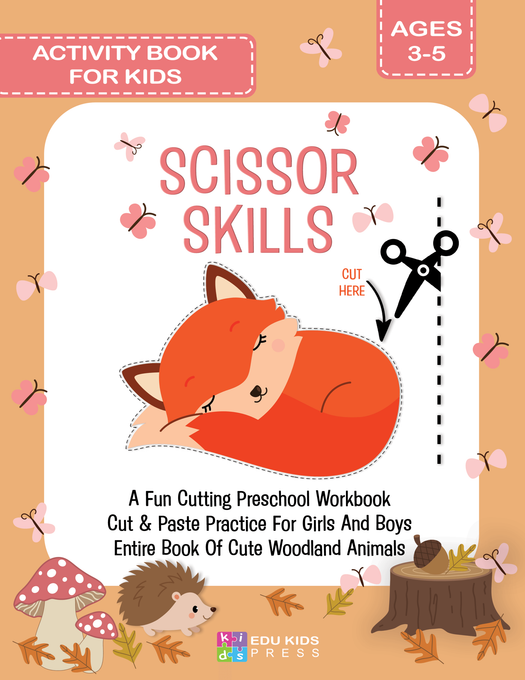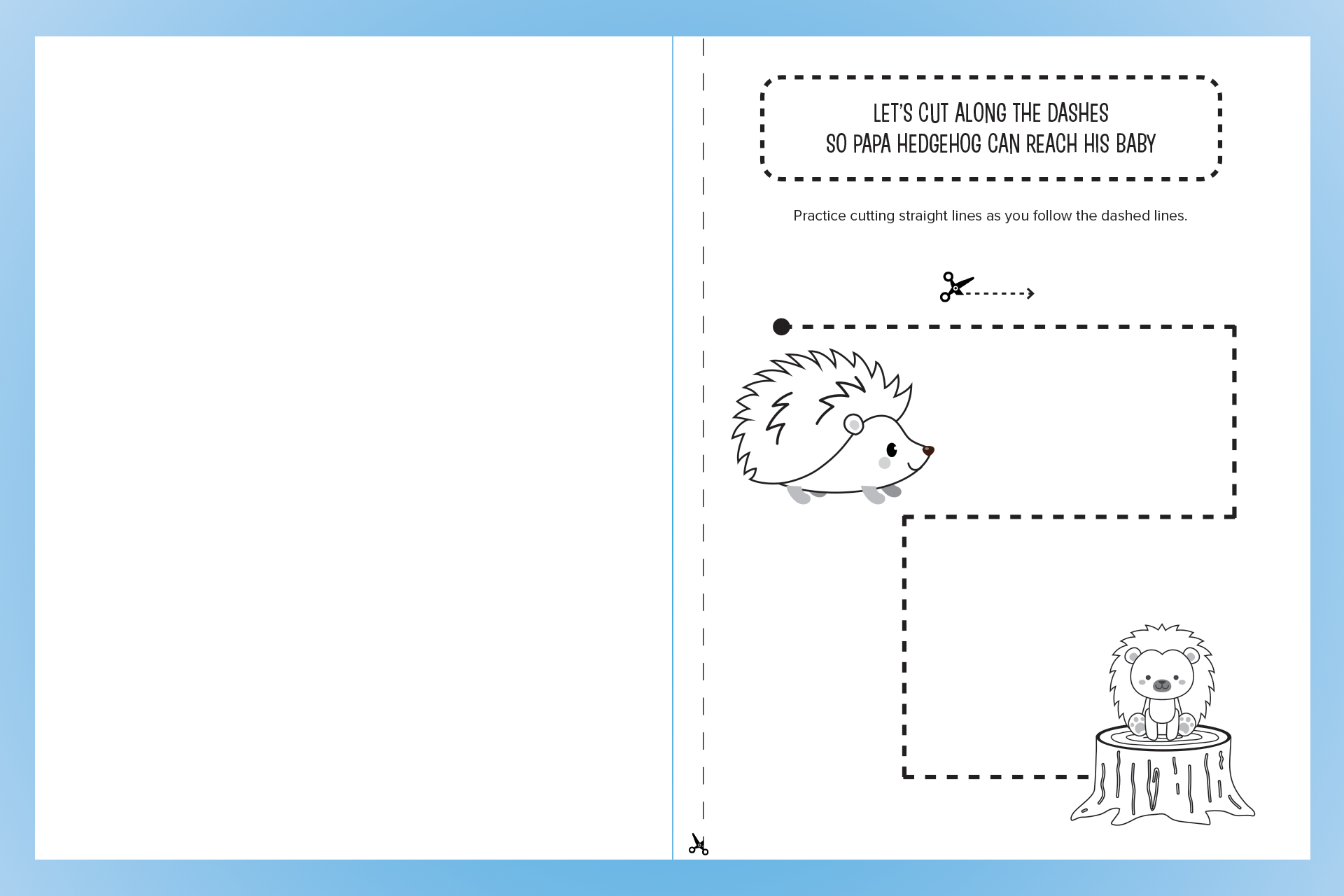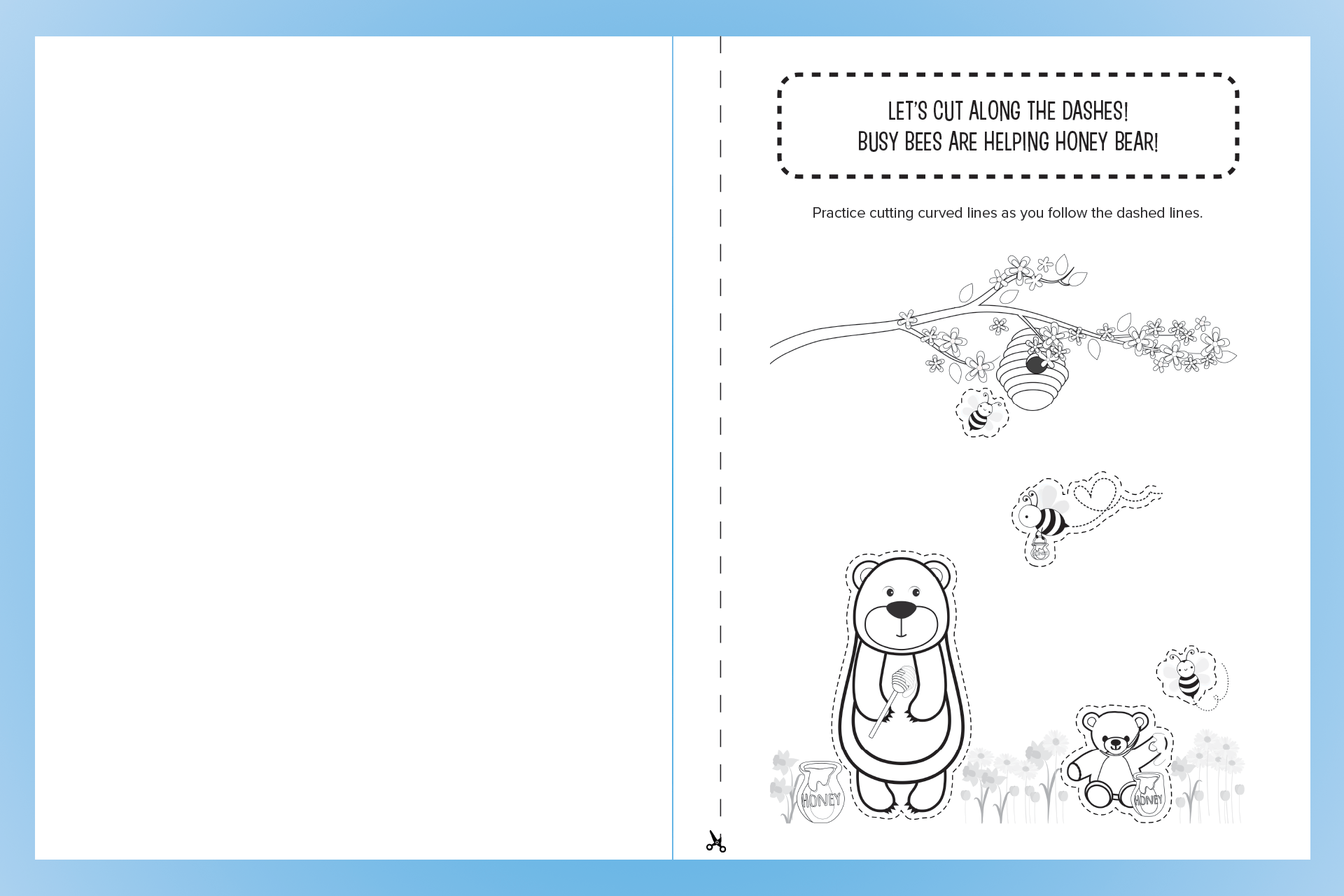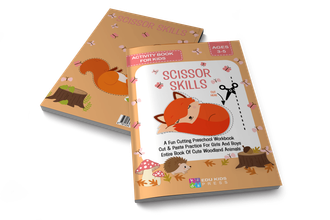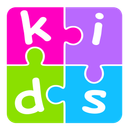EDU Kids Press Workbooks:
Scissor Skills
About EDU KIDS PRESS Scissor Skills Workbooks:
Scissor Skills Preschool Workbook for Kids: Over 40 Pages of Fun Woodland Forest Animals: A Cut and Paste Practice Activity Book for Pre K and Kindergartners Ages 3-5 by Jamie Bishop / EDU Kids Press.
This color, cut, and paste workbook is the perfect way for toddlers and preschoolers to learn how to hold and cut with scissors! Inside you’ll find forest animal exercises for kids that provide a fun-filled introduction to some crucial school-readiness skills.
Learning to cut with scissors helps a child learn to do so much more than just cut! … The opening and closing motion of scissors helps children build up the small muscles in their hands. These muscles are important for everyday activities such as drawing, using cutlery, brushing your teeth and getting dressed.
Cutting with scissors works on the separation of two sides of the hand and strengthens hand muscles. Bilateral coordination is also addressed when your child has to hold the scissors in one hand and paper in the other while cutting.
Being able to use scissors to cut well is important for many preschool and K1 activities including arts and crafts. Children may have the skills to use small scissors by three to four years of age.
Always use age appropriate and blunt-nosed scissors for your child's safety. It is very important to make sure your left handed child uses left handed scissors! Use the correct scissor grip from the very start, in order for your child’s fine motor skills to develop properly. Cheap scissors tend not to cut as well and lead to frustrating moments. Try wrapping tape such as electrical around the thumb hole so children will know where to put their thumb.
There are many ways to help develop your child’s fine motor skills in their daily activities that require control of small muscles in their hands. Some of these fine motor skill builders are letting your child set the table, hold knives, forks, and spoons to eat, pour juice into a cup, and help with meals by stirring, shaking, chopping, cutting, and mixing.
Other everyday routines that increase muscle strength and coordination are buttoning, zipping, snapping, buckling, and fastening while dressing themselves.
All of these daily activities prepare your children for more advanced skills, like writing with a pencil, using a computer mouse, or playing a musical instrument.

